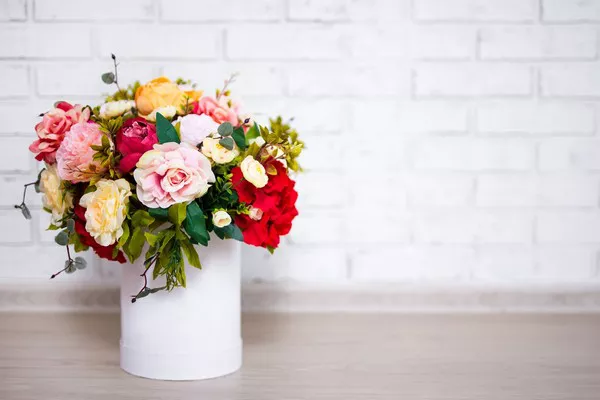Container gardening has become a popular pursuit for individuals seeking to infuse their living spaces with vibrant colors and natural beauty. Whether you possess a sprawling garden or a cozy balcony, planting flowers in pots allows you to unleash your creativity and cultivate a picturesque oasis. In this comprehensive guide, we will delve into the essential elements required to successfully plant and nurture flowers in pots, covering topics from pot selection to maintenance.
Selecting the Perfect Pot: Form Meets Function
1. The Aesthetic Appeal: Pot selection is the first step towards creating a visually appealing arrangement. Choose pots that complement your personal style and the overall aesthetic of your space. Materials like terracotta, ceramic, metal, and even woven baskets provide a diverse range of options to suit various design preferences.
2. Size Matters: Adequate pot size is crucial for ensuring healthy root growth. A pot that is too small restricts root expansion, leading to stunted plants, while a pot that is too large may retain excess moisture, causing root rot. Consider the mature size of the flowers you intend to plant and choose a pot with enough room for root development.
Choosing the Right Soil: A Foundation for Flourishing
1. Well-Draining Mix: Opt for a high-quality potting mix that provides adequate drainage. A mix that retains moisture without becoming waterlogged is essential for preventing root-related issues. You can also enhance drainage by adding perlite or sand to the mix.
2. Feeding Foliage: Look for potting mixes enriched with nutrients or incorporate slow-release fertilizers to provide essential nourishment to your plants. This ensures steady growth and vibrant blooms throughout the growing season.
Picking the Perfect Plants: Suiting Your Space and Style
1. Understanding Sunlight: Different flowers have varying sunlight requirements. Before selecting your plants, assess the amount of sunlight your chosen location receives. Some flowers thrive in full sun, while others prefer partial shade or even full shade.
2. Color Coordination: Plan your flower selection based on color schemes that harmonize with your environment. Experiment with contrasting or complementary hues to create visually stunning arrangements that elevate your outdoor or indoor space.
Planting Process: Nurturing from the Start
1. Prepping the Pot: Fill the chosen pot with potting mix, leaving a few inches of space from the top to prevent overflow when watering.
2. Gentle Transplanting: Gently remove plants from their nursery containers and loosen the roots before placing them in the pot. Ensure the top of the root ball is level with the pot’s rim.
3. Spacing Strategy: Maintain proper spacing between plants to avoid overcrowding. This allows for healthy air circulation and reduces the risk of disease.
4. Watering Wisdom: After planting, thoroughly water the pot to settle the soil around the roots. Monitor moisture levels closely and water when the top inch of soil feels dry to the touch. Be cautious not to overwater, as this can lead to root rot.
Maintaining Blooms: Nurturing and Nourishing
1. Feeding Frequency: Regular fertilization is essential for maintaining robust growth and vibrant blooms. Follow the recommended fertilization schedule on the product label and adjust based on the specific needs of your plants.
2. Pruning Protocol: Trim spent flowers to encourage new growth and prolong the blooming period. Additionally, remove any diseased or damaged leaves to prevent the spread of illness.
3. Pest Prevention: Regularly inspect your plants for signs of pests such as aphids, mealybugs, or spider mites. Intervene promptly with appropriate treatments to safeguard your plants.
4. Seasonal Care: Different flowers have distinct growth cycles. Some may thrive year-round, while others may need to be replanted after their bloom period. Research the specific care requirements of your chosen flowers to ensure their long-term health.
Overcoming Challenges: Common Issues and Solutions
1. Root Bound Plants: Over time, plants can become root-bound, meaning their roots have outgrown the pot. To alleviate this, gently remove the plant, prune the roots, and repot it into a larger container with fresh potting mix.
2. Watering Woes: Improper watering is a common pitfall. To avoid overwatering, ensure pots have drainage holes and use a moisture meter to gauge soil moisture accurately.
3. Nutrient Deficiency: If your plants show signs of yellowing leaves or poor growth, they may be lacking essential nutrients. Adjust your fertilization routine or switch to a more suitable fertilizer.
Conclusion
Planting flowers in pots is a delightful and rewarding endeavor that brings nature’s beauty to your doorstep or windowsill. With careful consideration of pot selection, soil, plant varieties, and maintenance practices, you can create breathtaking floral displays that uplift your surroundings and provide a sense of accomplishment. By understanding the unique needs of your chosen plants and implementing proper care techniques, you can embark on a journey of cultivating lush, vibrant blooms that showcase your gardening prowess.


